The Greek temple just north of the Place de la Concorde is known as “L’église de St-Marie-Madeleine”, or, in short, “La Madeleine”.
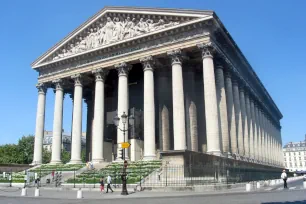
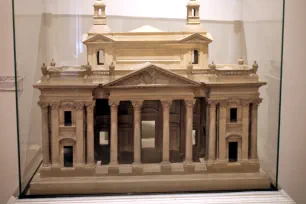
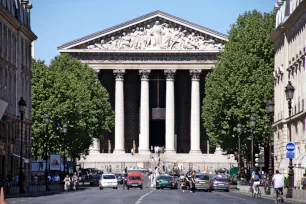
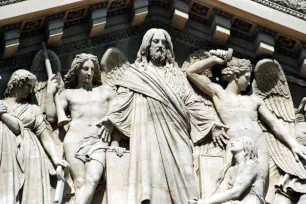
Despite its temple-like appearance, the large building is in fact a church, dedicated to St. Mary Magdalene. In French, Magdalene is known as Madeleine, hence the name of the building.
Original Designs
When construction of the church started in 1764, the plans made by architect Pierre Constant d’Ivry called for a design similar to that of the Invalides church. When d’Ivry died in 1777 his designs, which can be seen in the Musée Carnavalet, were dismissed by his successor, Guillome-Martin Couture. He decided to raze the unfinished building and start with a new design, this time based on the Panthéon.
A Temple becomes a Church
Construction halted during the French Revolution until 1806 when Napoleon decided to build a temple in honor of his army. He appointed Pierre-Alexandre Vignon who razed the structure yet again and started with the construction of a temple based on the ‘Maison Carrée’, an ancient Roman temple in the French city of Nîmes.
With the construction of the Arc de Triomphe, which honored the French Army, the new temple was looking for a new function. Some of the suggestions included using the temple as a parliament, a bank or even a train station. Finally, in 1842, the building was consecrated as a church, a function it still holds today.
Design
No less than fifty-two Corinthian columns surround the temple, each of them twenty meters or 66 feet tall. On the front facade, the pediment above the columns is decorated with large sculptures. The bas-reliefs on the bronze doors are by Henri de Triqueti and represent the Ten Commandments. The temple’s facade acts as a great architectural counterbalance to the colonnaded facade of the Palais Bourbon across the river.
Interior
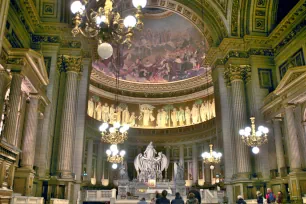
The church consists of a single nave. On entering, the attention is drawn by the large sculpture group depicting «The Ascension of Mary Magdalene» just behind the main altar. It was created in 1837 by the Italian-French artist Charles Marochetti.
The half-dome behind the statue is decorated with a huge composition painted in 1836-1838 by Jules-Claude Ziegler. It depicts «The History of Christianity». The ceiling is also decorated with several paintings which, due to the dim light, are rather difficult to admire.
The church also boasts a pipe organ, built in 1846 by Aristide Cavaillé-Coll, a talented organ builder who created more than 500 organs for churches all across Europe. The organ, once used by famous composers such as Camille Saint-Saëns and Gabriel Fauré, is still used for concerts to this day.
Location
The Madeleine Church is located at the Place de la Madeleine, close to the Palais Garnier and the Place de la Concorde.

